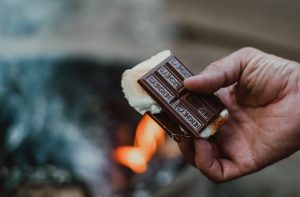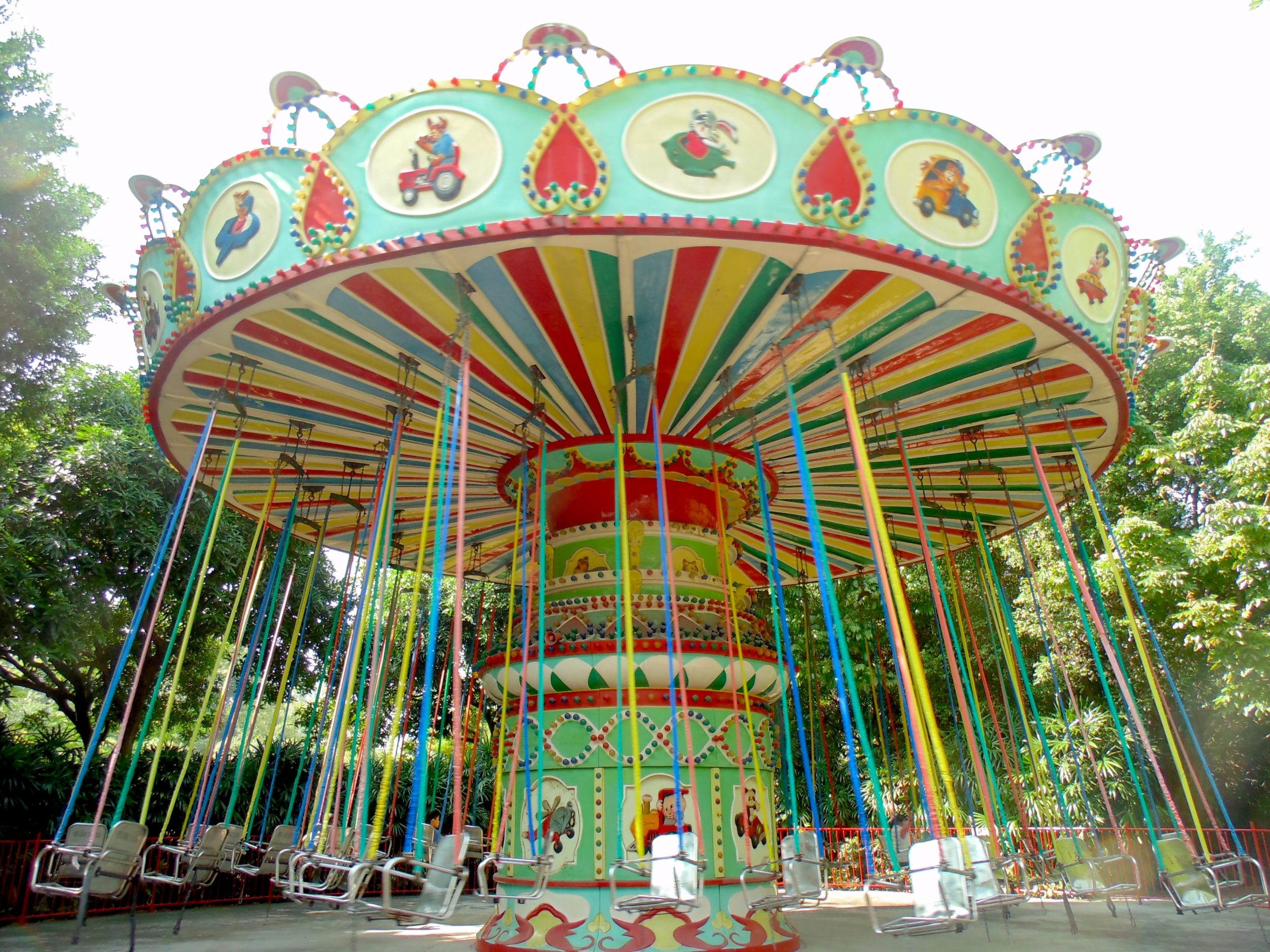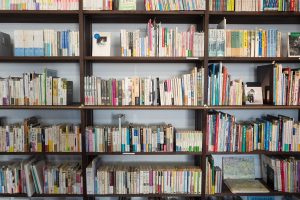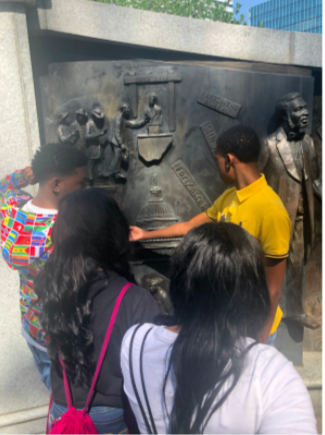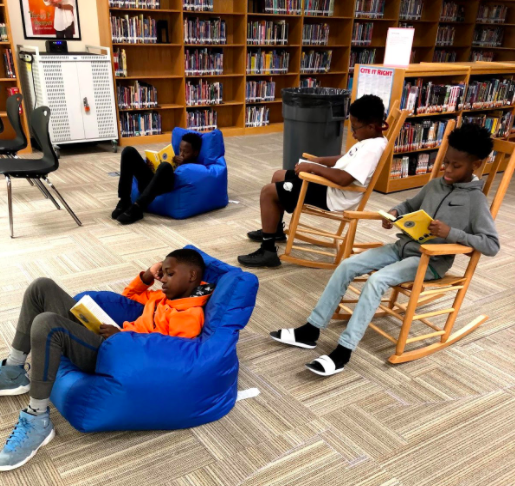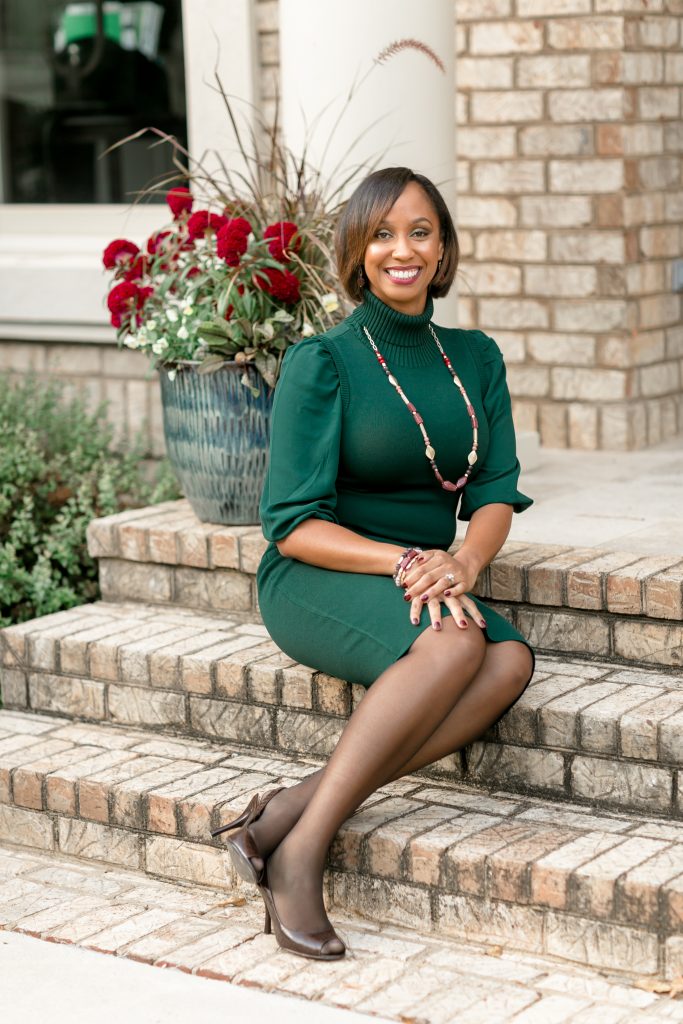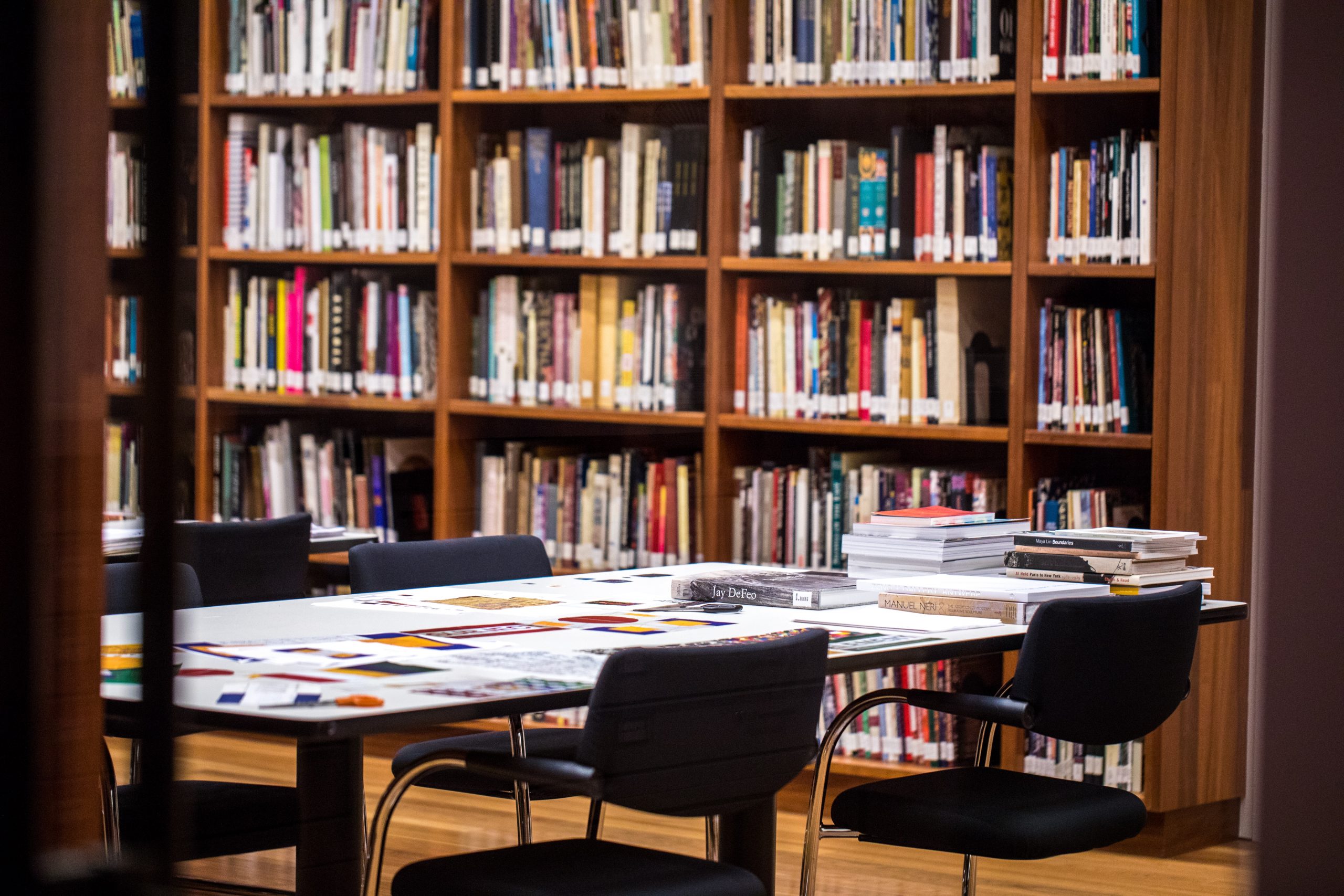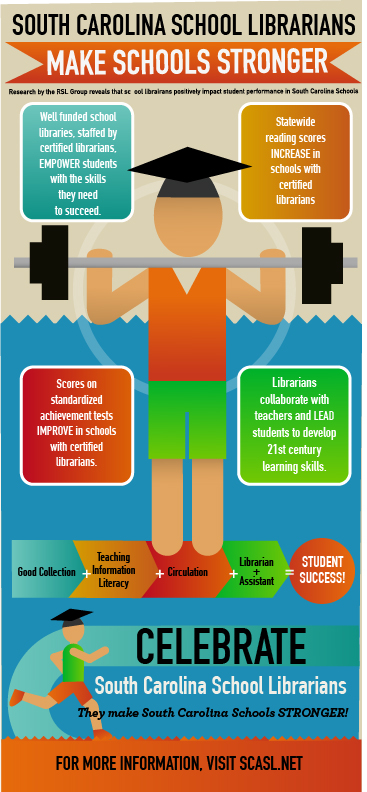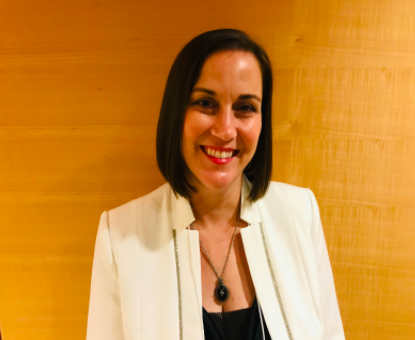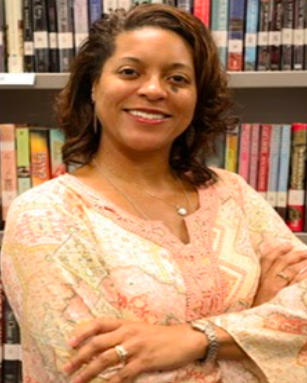By: Amanda Harris, South Carolina High Media Specialist
I love reading books, cataloging and shelving books, shopping for books, and placing books in readers’ hands, but as a high school media specialist, all that fun with books is only a small portion of my actual job. As a highly qualified educator who shares my literacy instruction skills with students and colleagues every day, my role goes far beyond the library stacks.
Since it’s summertime and I’m a girl who loves chocolate, indulge me for a few minutes and let me explain the library’s role in school-wide literacy instruction as an ooey, gooey, warm, melty, delicious s’more.
The Graham Cracker
The foundation of a s’more is the graham cracker, providing support and structure on both sides to hold the entire concoction together. My goal as a media specialist is to provide resources and support for all content areas so that all teachers can be more effective in guiding students to content-specific literacy. Even though my district has 1:1 Chromebooks and students may think they can just Google everything for research, someone still has to teach them how to wade through their search results! One of the most important items on my to-do list in this graham cracker part of my job is to actively recruit teachers to share their classes with me. Once I have led them to realize how desperately they needed to schedule time for co-teaching (sometimes with free coffee involved in the persuasion), I make a point of threading my info literacy standards and skills over and over through every unit I teach across the curriculum.
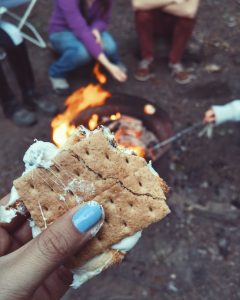
When I’m handing out the metaphorical graham crackers for the s’mores, I have to be intentional with teacher relationships, creative with my curriculum ideas, and even a little bit repetitive with teaching the skills to students, but without these graham crackers, the whole s’more falls apart and students lose opportunities for big-picture literacy application across the curriculum.
Mmmm…Chocolate
My favorite part of the s’more, of course, is the chocolate, and my favorite part of being a school media specialist is definitely the fun library offerings: student book clubs over Chick-fil-a lunch boxes, faculty book clubs with grown-up conversation over breakfast snacks, author visits, makerspace crafting days, games and Legos out on the tables, and independent choice reading checkouts. These are the pieces of the school-wide curriculum puzzle that make the whole idea of literacy more enjoyable.
The obvious sticking point here is that by the time students reach high school, very few of them are going to seek pleasure reading opportunities or spend their free time hanging out with a book club. How do I offer chocolate for the s’mores of students who are reluctant readers? I’m grateful to have some fantastic colleagues (not just in the English department!) who value choice reading enough to bring their students to me for independent reading checkouts. Sometimes they have target genres, sometimes they have target themes, and sometimes they want students to just pick anything that looks interesting.
During this past year, we blocked off a weekly time with some of the English 1 and 2 classes to just come into the library for a routine sustained reading period. Their classroom teacher, my fellow media specialist, and I all sat down with them on the couches and modeled reading for fun, too! (Well, that was the plan. I actually spent more of my time up out of my seat, in the stacks, helping students find their next books to read, but that was fine with me!) When we suddenly switched to distance learning, I missed all of my students, but these two classes were the ones I most desperately wished to see.
Pleasure reading and finding a book to enjoy is the chocolate in the middle of the school-wide literacy s’more, and while I do love chocolate with all my heart, seeing reluctant readers find books they like and seeing students come to the library for fun in their free time brings me more joy than an entire one-year supply of my favorite Harry & David dark chocolate truffles.
Sticky Marshmallows
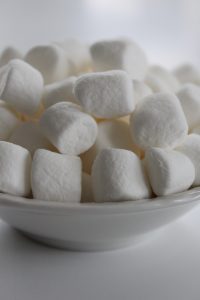
Finally, I must address the sticky, fire-roasted marshmallow that holds everything together between the graham crackers. At my school, this is the part of my media specialist role that doesn’t exactly fit the typical mold, but it just makes sense. If the library is the heart of the school and the media specialists should be dabbling in teaching with every department in the building, why not have your media specialist(s) serve as writing instructional lead teachers?
I’m on a flex schedule and my teaching calendar does fill up with research projects and other library lessons. However, because there are two of us serving as full-time media specialists, we are able to schedule time to actively help teachers with writing instruction. We conference with teachers during their planning periods, or we go to their classrooms and help with a writing lesson or student writing conferences. The best part about this role is that sitting down to brainstorm a writing assignment with a teacher gives me an easy opportunity to market the library’s resources.
I’ll be honest: Writing can sometimes be the stickiest part of school-wide literacy. Sure, everybody can fit more reading into their classrooms, but writing? Writing takes time to assess! Writing takes time to actually do in the classroom, precious time that is also needed to teach content-specific skills! Some students just don’t want to write, and it’s just more painful for everyone involved! Yes, yes, and yes. I totally get it, especially after 10 years in the English classroom and many hours of sleep lost to essay grading, but that doesn’t mean that writing instruction can just be swept aside. Writing = thinking, and it’s a critical part of the learning process.

Helping teachers regularly include more quality writing in their daily classroom routine has challenged me. I have had to study and learn more about how content literacy should look different across the departments, and I have had to lead some tense meetings, but I have also been able to see the exciting success my colleagues are having. To return to the marshmallow comparison, sometimes I accidentally drop my actual literal marshmallow in the fire, so I have to toss it and try again. Sometimes I don’t leave it in the fire long enough, so I have to try again. In the big literacy picture, writing instruction is the marshmallow, and sometimes we have to toss what we did and try again. Isn’t that what drafting and revising is all about? In the end, while the marshmallow is challenging to get just right, the finished s’more just isn’t complete without it.
Are you ready to go make some s’mores yet? If you want to get started on some figurative s’mores, go ahead and email your media specialist to get started on ideas for collaboration this year. If you want literal s’mores, keep the campfire far, far away from the library books.
About the Author
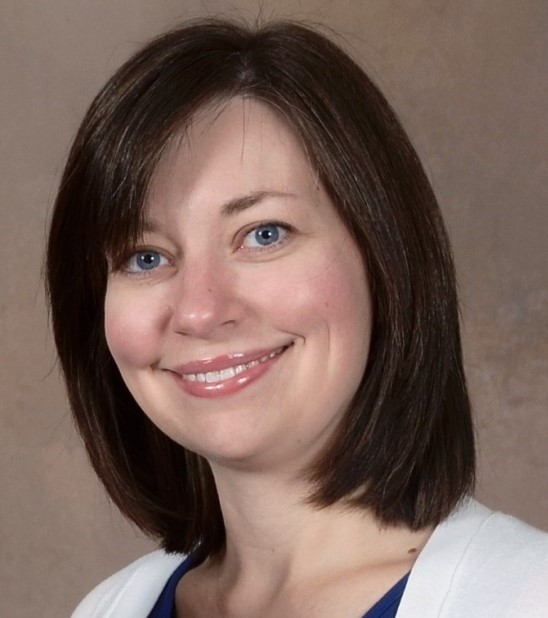
Amanda has twelve years of teaching experience and is beginning her third year as a high school media specialist at Walhalla High School.

